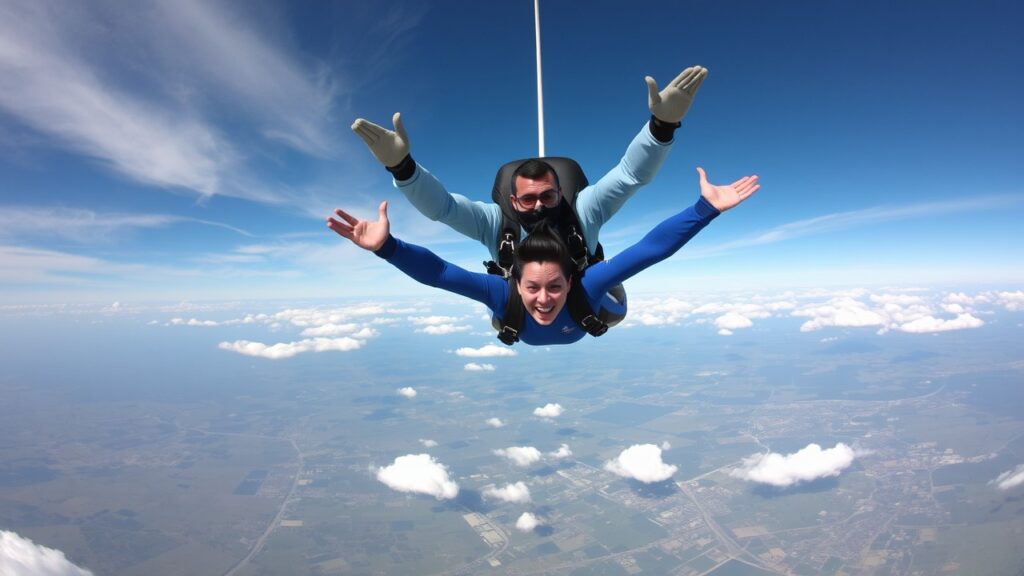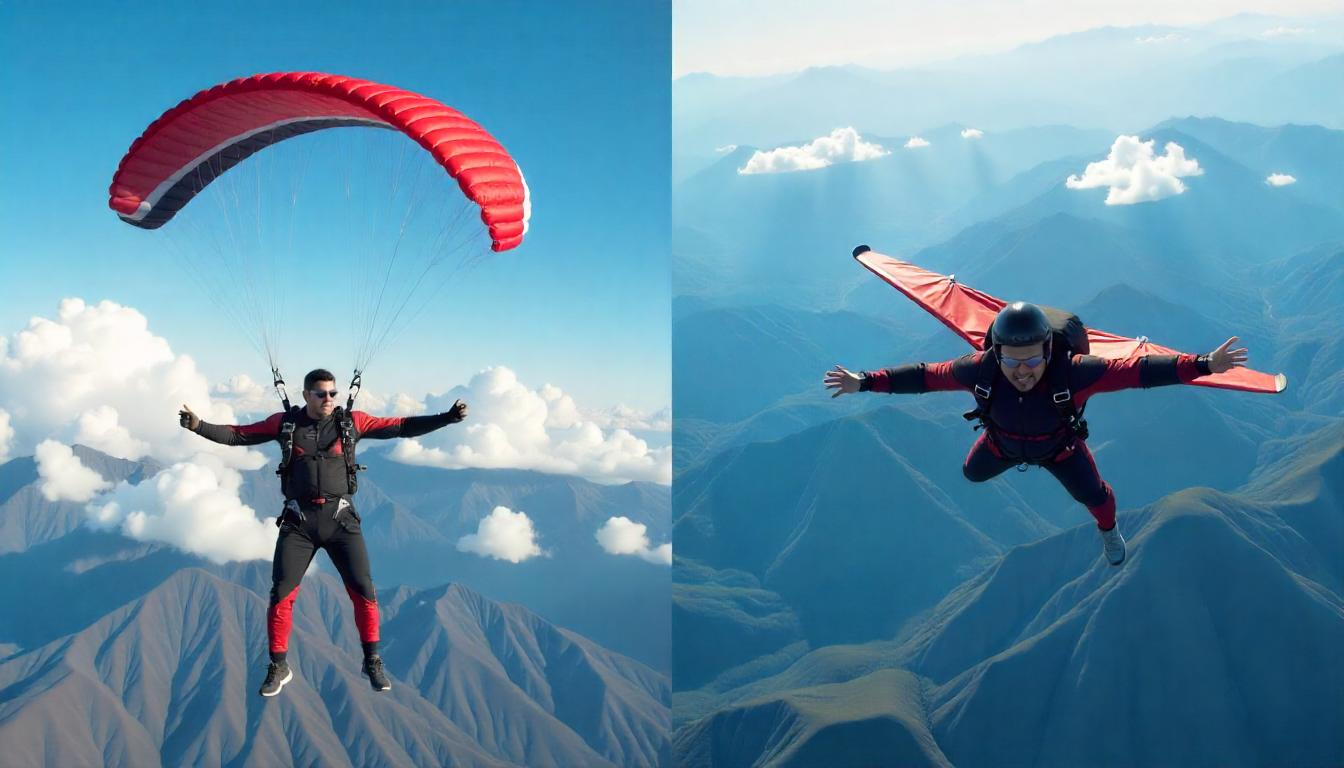Extreme sports, once considered activities for only the bold and adventurous, are becoming increasingly popular worldwide. These exciting sports are attracting a diverse crowd, from young adults seeking unique experiences to families looking for fun-filled vacations. This rise in popularity is driven by several factors, such as greater media coverage that allows fans to share their daring exploits online, and advancements in technology that make these sports safer and more accessible. People are eager for experiences that challenge them and provide a sense of accomplishment. As more individuals participate in extreme sports through social media and local events, their appeal continues to grow, moving them from the edges of culture into the extreme sports mainstream. Extreme sports represent more than just excitement; they embody a lifestyle focused on adventure and personal development. We will explore why extreme sports popular and examine the extreme sports trends.
Extreme Sports on the Rise
Extreme sports, often called action or adventure sports, include many activities that require high risk and physical effort. These sports take place in tough environments like mountains, oceans, or deserts. They demand special skills and equipment to handle the dangers involved. Some well-known examples of popular extreme sports are:
Skateboarding: A street sport where riders perform tricks on a skateboard, usually in city areas or skate parks.
Snowboarding: A winter sport where participants ride down snowy slopes on a board. It has become a cultural event with competitions and a strong community.
Surfing: A water activity where surfers ride waves on a board, always searching for the best ocean spots for an exciting experience.
Rock climbing: A tough sport where climbers scale rock faces using ropes and gear, testing both their strength and mental focus.
Skydiving: An adrenaline-packed activity that involves jumping from an airplane, freefalling, and then opening a parachute, offering a thrilling view of the world below.

Once seen as unusual, these activities have grown in popularity over the years, becoming mainstream sports that draw millions around the globe. This is a testament to the history of extreme sports and their evolution.
The increase in extreme sports started in the late 20th century when a new group of athletes sought bigger challenges than traditional sports offered. With the rise of the internet and social media, fans could share experiences and showcase their skills, connecting with others who love these activities. As visibility grew, so did sponsorships, competitions, and media attention, making extreme sports a part of popular culture. Today, these activities represent personal adventure and expression and have turned into a global industry that inspires new generations looking for excitement and challenges.
Factors Behind Mainstream Acceptance
Several important reasons explain why extreme sports have become popular in mainstream culture.
Media Exposure:
Recently, media coverage of action sports has greatly increased. This includes everything from special TV channels to popular online sites and social media. The excitement of extreme sports shines through in energizing broadcasts and eye-catching visuals. Events like the X Games and GoPro Mountain Games draw large crowds and reach millions more through streaming, bringing these thrilling activities into homes around the world. Athletes use platforms like Instagram and YouTube to share their experiences and stories, creating a bond with fans and aspiring participants. This online interaction builds a community that celebrates the extreme sports lifestyle, attracting a wide range of followers. Watching extreme sports documentaries has also been a growing trend.

Technological Improvements:
Advances in technology play a big role in the growing acceptance of extreme sports. Equipment such as boards, skis, and bicycles has become lighter and stronger, allowing athletes to perform more complex tricks. New safety gear like helmets and pads has also reduced injury risks. These improvements make extreme sports safer, encouraging more people to try them, including those who were previously hesitant due to safety concerns. Extreme sports for beginners now have better resources.
Seeking Unique Experiences:
In a world where many things feel the same, people are looking for adventures that challenge them. Extreme sports let participants push their limits and face their fears, offering a chance for personal growth. This desire for experiences resonates with younger generations, who often value experiences more than material things. Engaging in extreme sports helps individuals step outside their comfort zones and feel a rewarding sense of achievement.
Acceptance of Risk:
Society’s view of risk is changing, with more people willing to take calculated chances. The perception of extreme sports has shifted from being seen as simply dangerous to appreciating the skill and discipline needed to excel. Although risks of extreme sports are a part of these activities, many athletes are well-trained and follow safety protocols to reduce injuries.
Olympic Inclusion:
The addition of skateboarding, surfing, and sport climbing to the Olympic Games has enhanced the legitimacy of extreme sports. Being recognized on an international stage raises the profile of these activities and motivates a new generation of athletes. As extreme sports continue to grow in popularity, they are set to become an important part of our culture for years to come.
The Rise of Extreme Sports
The growing popularity of extreme sports has brought several important benefits of extreme sports, changing how people view and participate in these activities.

More People Joining In:
One key benefit is the rise in participation. As society accepts extreme sports more, access to these activities improves. This popularity encourages more individuals to join in. Local clubs and communities focused on extreme sports are growing. These clubs offer a place for people to learn and practice, while also helping them connect with others who share their interests. This sense of community is essential, providing a support system that inspires members to challenge themselves and develop their skills.
Economic Benefits:
Another positive outcome is the economic boost from extreme sports. There is a greater demand for specialized gear, clothing, and travel options related to these sports. This increased need is creating jobs and new business opportunities in various areas associated with extreme sports. Local stores selling equipment, fitness centers providing training, and travel agencies organizing adventure trips are examples of this thriving industry. This growth not only helps local economies but also encourages further investment in the sports community.
Health Advantages:
Extreme sports also contribute to better health. Many of these activities require strong physical fitness. As participants engage in these sports, they often improve their heart health, strength, and flexibility. This emphasis on physical activity can lead to healthier lifestyles. Additionally, extreme sports can benefit mental health. Participating in such activities can lower stress and enhance self-confidence. The excitement of learning a new skill or overcoming a challenge brings a sense of achievement that positively impacts mental well-being.
Inspiration for Youth:
Lastly, extreme sports athletes inspire future generations. They often serve as role models for young people. Their hard work and achievements can encourage others to stay active and tackle challenges. Watching someone succeed in extreme sports motivates youth to chase their interests, whether that involves participating in these sports or discovering their unique paths. The influence of these athletes can shape the goals and actions of many young individuals, nurturing a new generation of athletes and explorers. Watching the most watched extreme sports events has also inspired many youth.
In conclusion, the rise of extreme sports has led to more people getting involved, economic growth, health benefits, and inspiration for the younger generation. These elements work together to create a lively and growing community.
The Future of Extreme Sports

The future of extreme sports looks bright. As technology improves, more people are likely to get involved. Media coverage of these sports is increasing, which also boosts their popularity. Major events attract larger crowds, leading to higher participation and more fans. The addition of extreme sports to the Olympics could enhance their visibility and appeal, drawing in new fans and athletes. The thrill and excitement of these activities may encourage more individuals to join the community.
However, extreme sports carry risks of extreme sports. Safety must be the top priority for participants. It is essential to understand the dangers and take measures to avoid injuries. Proper training is crucial for learning the necessary skills for each sport. Qualified instructors can help participants gain confidence and expertise. Using quality equipment is vital in extreme sports. Good gear improves performance and offers protection from injuries. Following safety rules set by organizations is key for a secure experience. In conclusion, as extreme sports grow in popularity, prioritizing safety is essential. With the right training and precautions, people can enjoy these exciting activities while staying safe. For those who are ready to dive in, learning the basics and perhaps taking a course can be a good way to start with extreme sports for beginners.
In Conclusion
Extreme sports have changed a lot from their early days in counterculture. What started as small activities for a few people is now widely accepted, drawing in many participants and fans. This change is the result of several important factors. One key factor is the growth in media coverage. TV networks and online platforms frequently air extreme sports events, exposing them to millions. This increased visibility has sparked interest among people who might not have considered these activities before. Technological improvements also play a crucial role.
The gear used in extreme sports has become much safer and easier to access. With better equipment, more people feel encouraged to try these sports, knowing they are better protected as they take on challenges. Today, many individuals look for unique experiences. Extreme sports allow people to step beyond their comfort zones. They provide excitement and the chance to test personal limits. This desire for adventure fits into a larger trend where people prioritize experiences over material goods. As extreme sports grow in popularity, they offer thrilling opportunities for those willing to try. They invite people to lead a lifestyle full of challenges and rewards, appealing to a wide audience.




